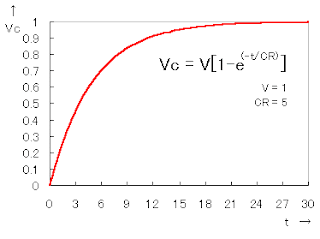Levels of Integration
ICs are categorized according to their circuit complexity which can be measured by the number of electronic components contained in the package. The process of integration can be classified as small, medium, large, very large, or super large.
Small-Scale Integration (SSI) – SSI devices contain several independent electronic components in a single package. The inputs and outputs are connected directly to the pins in the package. The number of components is less than 10 in every package. Logic Gates like inverters, AND gate, OR gate and etc. are products of SSI.
Medium Scale Integration (MSI) – MSI devices has a complexity of 10 to 100 electronic components in a single package. They usually perform basic and specific digital operations and includes decoders, adders, counters, multiplexers, and demultiplexers.
Large Scale Integration (LSI) – Products of LSI contain between 100 and 10,000 electronic components in a single package. They include memory modules, I/O controllers, and 4-bit microprocessor systems.
Very Large Scale Integration (VLSI) – Devices that are results of VLSI contain between 10,000 and 300,000 electronic components. VLSI produces large memory modules and 8bit, 16-bit, and 32-bit microprocessor systems.
Super Large Scale Integration (SLSI) – This kind is a new type of integration which produces ICs having more than 300,000 electronic components in one package. Examples of devices which use SLSI are 64-bit microprocessor systems and microcontrollers.
Common Kinds of Integrated Circuits
Voltage Regulator – A voltage regulator IC is a three-terminal linear IC which is capable of providing extremely stable voltage supply. Many different voltage regulator ICs that can supply load currents from 100mA to 3A are available commercially. This type of ICs commonly has a feature called thermal shutdown. When the internal temperature of the IC reaches a certain temperature (typically +175 deg. Celsius), the regulator shuts down and prevents the chip from getting any hotter. This protects the IC from excessively high value of heat which may destroy it and damage the connected circuit or load. The LM340 series is a popular series of voltage regulator ICs. They provide regulated voltages of 5, 6, 8, 10, 12, 15, 18, and 24V. Common applications of voltage regulator ICs include power supplies.
Operational Amplifier (OP Amp) – OP Amps are the most commonly used type of linear IC. It is a type of amplifier with a high gain, which means that the ratio of the output to input voltage is in high percentage. Aside from being amplifiers, OP Amps can also be used as voltage comparators.
Logic IC – This type of integrated circuit is the commonly used of all digital ICs. These ICs contain gates which correspond to the logic functions of AND, OR, NAND, NOR, XOR, XNOR, and NOT. Other types of digital ICs are created by creating different combinations of these logic gates.
Multiplexer – A multiplexer is a type of digital IC which contains combinational circuit that selects binary information from one of many inputs and directs it to a single output line (many to one). Multiplexer ICs have select pins that determine which of the many inputs should be selected as the output.
Demultiplexer – Demultiplexer IC is the counterpart of multiplexer IC. It accepts one input and directs the input to many output lines (one to many).
Decoder – Decoder ICs are kinds of digital ICs that are capable of converting binary information to a format which is understandable by humans. For example, the binary digit 0101 can be decoded by a decoder IC and be displayed as a numeric number 5 in a 7-segment display component.
Adder/Subtractor – These are digital ICs that perform the basic operation of binary addition and subtraction. There are no ICs which can perform multiplication and division operations but these mathematical functions can be performed by using Adder and Subtractor ICs along with other ICs like counters.
Flip-flop – Flip-flops are the basic elements of a sequential logic circuit. They are digital devices which produces outputs in reaction to a series of inputs. Unlike logic gates, they do not have predetermined output values because their output depends on the sequence of inputs. Flip-flops are contained in different IC packages.
Counter – Counters are created through the combination of different flip-flops. Counters produces a string of outputs which follows a specific pattern. For example, the output of a counter IC may be from 0000 to 1111 (that is a count from 0 to 15).
Registers – Registers serves a storage of bits of information. They are often associated with clocks and mainly composed of flip-flops. Register ICs come in different packages which have different storage capacities.
Clocks/Timers – These are ICs which are capable of producing signals which could serve as inputs to other ICs or gates. Clock signals are commonly used to synchronize the operations of a sequential circuit.



































